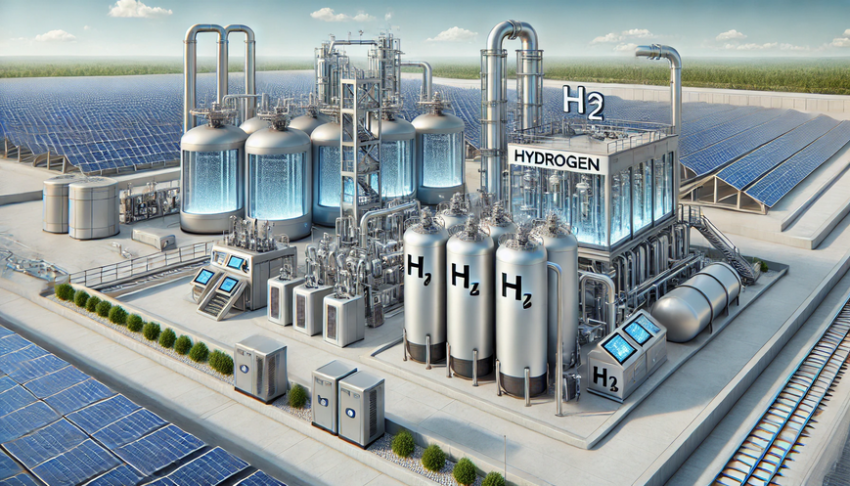Hydrogen Generation Market Size is projected to grow from USD 158.8 billion in 2023 to USD 257.9 billion by 2028, at a CAGR of 10.2% according to a new report by MarketsandMarkets™. The growing emphasis on environmental sustainability, rising adoption of fuel cell vehicles, and intermittent renewable energy integration accelerate the growth of the Hydrogen Generation Market.
Global hydrogen generation demand has been increasing gradually due to goals set to achieve net zero emissions in recent years. Hydrogen has long been recognized as a possible low-carbon transportation fuel, but incorporating it into the mix of transportation fuels has been a challenge. It has an advantage over fossil fuels and is becoming expensive day by day. There has been enormous demand for hydrogen for use in fuel-cell electric vehicles and rockets in the aerospace industry. In the transportation sector, fuel cell costs and refueling stations determine how competitive hydrogen fuel cell automobiles are, but lowering the supplied price of hydrogen is a top concern for truck manufacturers.
Download PDF Brochure: https://www.marketsandmarkets.com/pdfdownloadNew.asp?id=494
This report segments the Hydrogen Generation Market based on application into six categories: petroleum refinery, transportation, ammonia production, methanol production, power generation and others. Petroleum Refinery is expected to hold the largest market share in the Hydrogen Generation Market during the forecast period. The rising demand for hydrogen in petroleum refineries can be attributed to the exceptional characteristics of hydrogen, which are essential for a variety of applications within hydrocarbon processing units. Hydrogen is a key component in various desulfurization processes such as Hydrodesulfurization and catalytic Reforming used in petroleum refineries to meet environmental regulations and reduce the sulfur content in crude oil and its derivatives are the factors that are expected to drive the growth of the petroleum refinery segment during the forecast period.
Based on the Source segment, the Hydrogen Generation Industry is segmented into blue hydrogen, gray hydrogen and green hydrogen. The green hydrogen segment is expected to dominate the market during the forecast period as green hydrogen is an environmentally friendly energy source. Green hydrogen is inherently intertwined with the principles of sustainability, making it a vital component of efforts to mitigate environmental impact. By harnessing renewable energy sources like wind and solar power for its production, green hydrogen plays a pivotal role in minimizing carbon emissions and advancing the transition towards cleaner energy.
Based on the technology, the generation market is segmented into steam methane reforming, partial oxidation, coal gasification, auto thermal reforming, and electrolysis. The electrolysis segment is expected to be the fastest growing market during the forecast period owing to the low carbon emission compared to other methods and high purity. Electrolysis technology is highly versatile and environmentally friendly as compared to other technologies, which is expected to drive the growth of the electrolysis segment in the forecasted period.
This report segments the Hydrogen Generation Market based on region into North America, Europe, Asia Pacific, South America, Middle East, and Africa. During the forecast period, the Europe segment holds the second highest CAGR due to adoption of hydrogen fuel cell vehicles in the region. According to European Council for an Energy Efficient Economy (ICEEE), The European Union (EU) set a target of 30 million zero emission vehicles by 2030.
Asia Pacific is expected to be the fastest-growing region in the Hydrogen Generation Market.
Asia Pacific is expected to be the fastest growing region in the Hydrogen Generation Market during the forecast period. The Asia Pacific region comprises major economies such as China, Japan, India, Australia, and South Korea. The Hydrogen Generation Market in Asia Pacific is primarily fueled by the increasing number of petroleum refineries and usage of hydrogen in these refineries. Asia Pacific is one of the leading markets for adopting green technologies to meet the government targets for reducing GHG emissions. Japan and South Korea have been heavily investing in fuel cell adoption since 2009 because of the commercial deployment of Japanese fuel cell micro-CHP products. Japan is the first nation to commercialize fuel cells and is supporting projects related to the use of fuel cells in residential and automotive applications. It aims to deploy green hydrogen on a large scale. The country plans to have 200,00 green hydrogen fuel cell vehicles and 320 hydrogen refueling stations by 2025 to meet the global carbon emission standards.
Make an Inquiry: https://www.marketsandmarkets.com/Enquiry_Before_BuyingNew.asp?id=494
Key Market Players
Due to their strong supply network, a few global and regional players hold a strong foothold in the Hydrogen Generation Market. Linde plc (Ireland), Air Liquide (France), Air Products and Chemicals, Inc. (US), Saudi Arabian Oil Co. (Saudi Arabia), and Shell plc (UK) are the market leaders in the Hydrogen Generation Market.

